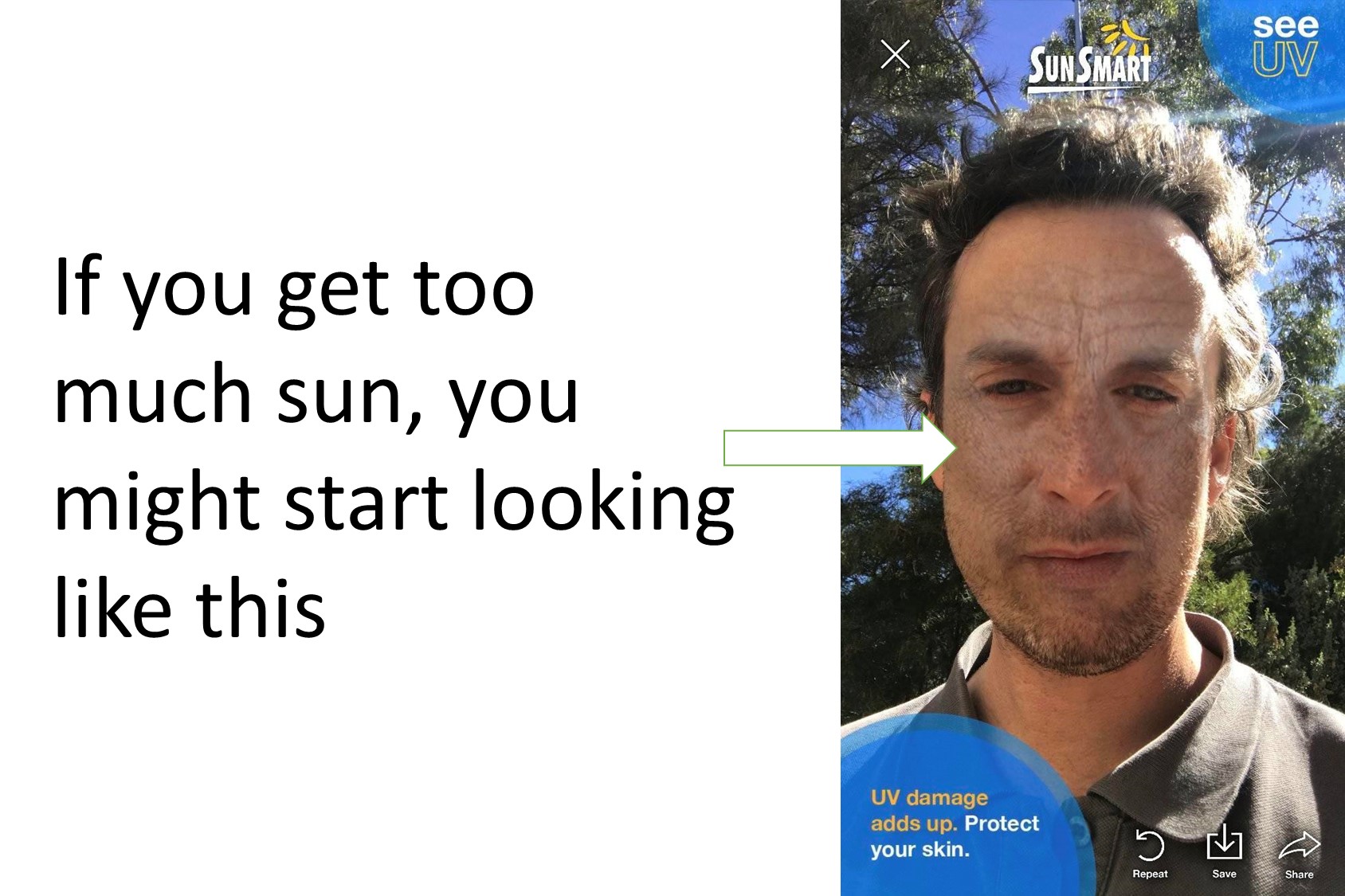
In a previous post, I attempted to provide some guidelines on the amount of sun exposure you would need to sustain healthy levels of vitamin D.
One of the challenges of doing so is ensuring enough exposure for vitamin D levels, but not too much exposure such that your risk of skin damage increases.
Today I found a couple of tools – produced by Sunsmart – a Victorian not-for-profit health promotion group that you might find helpful in better understanding healthy levels of sun exposure in Australia. Both of them are free.
The first of these tools is the SunSmart app – available for both Apple and Android phones.
When you first fire up the app, you are invited to provide some profile information regarding your skin colour, height, weight, age, gender and location. I recommend providing this information as the functions of the app depend on understanding your sun exposure needs. Remember in the previous post that sun exposure needs are different based on skin type and location.
Having provided that information, the app then does 3 main things.
First, it provides you with an analysis of the UV situation in your current location. Drawing on external data about temperature and UV levels in your local area, it makes recommendations about during which times of the day, sun protection (e.g. clothing, sunscreen) is recommended. You can see in the picture below, that based on the expected high UV rating for today, the app is recommending sun protection from 9 to 5.30 if you are outside. The app can provide daily alerts when UV index exceeds the safe limit.
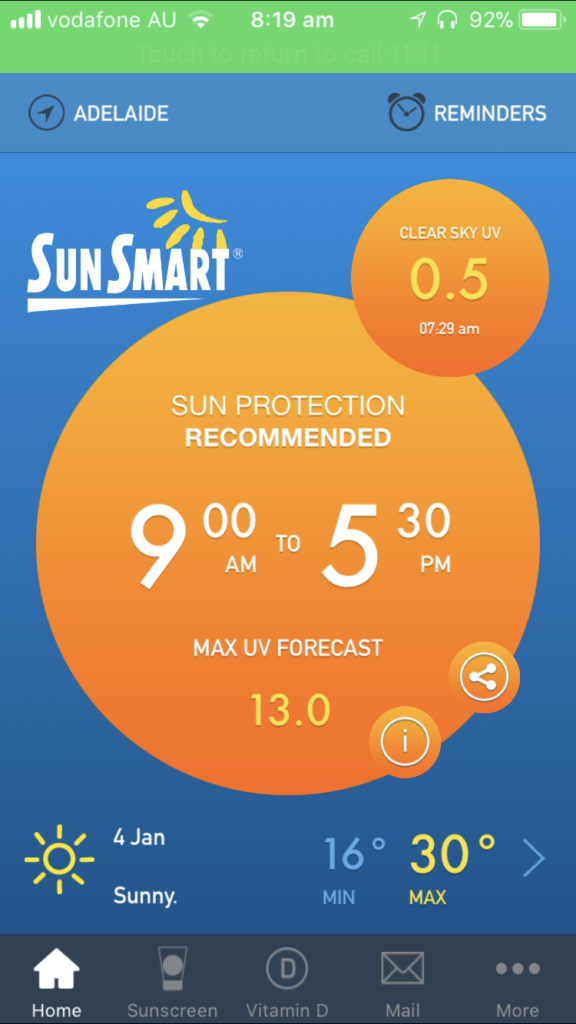
Second, the app can estimate how much sunscreen you need, and how often it needs to be applied, based on the previous profile information, as well as your current clothing. I spend most of my life in shorts and a t-shirt, so I used this to estimate my sunscreen needs in the picture below.

Third, the app provides retrospective advice on your sun protection needs for the day, based on an analysis of exposure time, exposed areas of body, and skin colour. This is useful for getting a better idea of how much sun protection you need on an average day in a way that balances vitamin D needs, and skin protection.
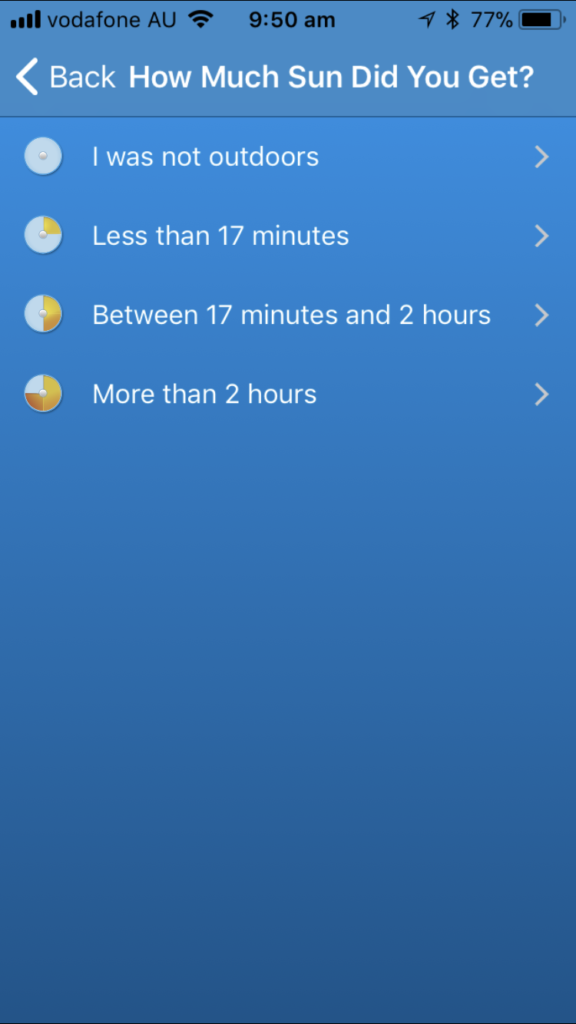
In addition to these features, the app aggregates and links to key information from the Sunsmart website.
The second of these tools is the See UV app, also available for both Apple and Android phones.
The See UV app accesses your phones camera and location and then provides two augmented reality functions.
The first function accesses the main phone on your camera to show you the UV in your current environment. It supplements this with external data on predicted UV for your area. The effect is relatively simple. You can see in the picture below the red haze, indicating the UV content. It does little more than get you thinking about the invisible presence of UV in your environment.
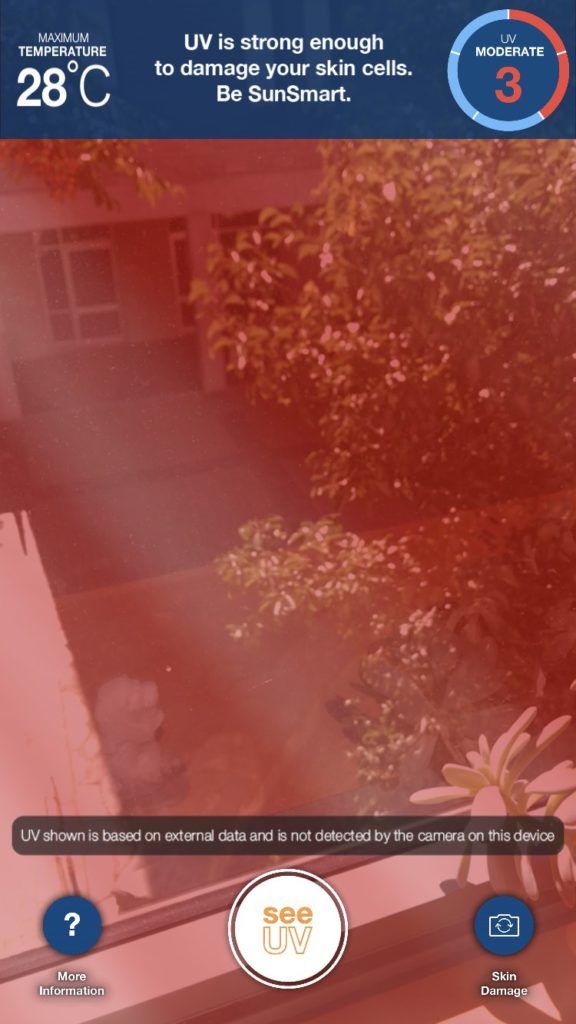
The second (and frankly horrifying) function of the app is to visualise how your face would look with UV damage to your skin. Below is my picture. Apparently excess sun exposure will make me look old and give me a second chin.
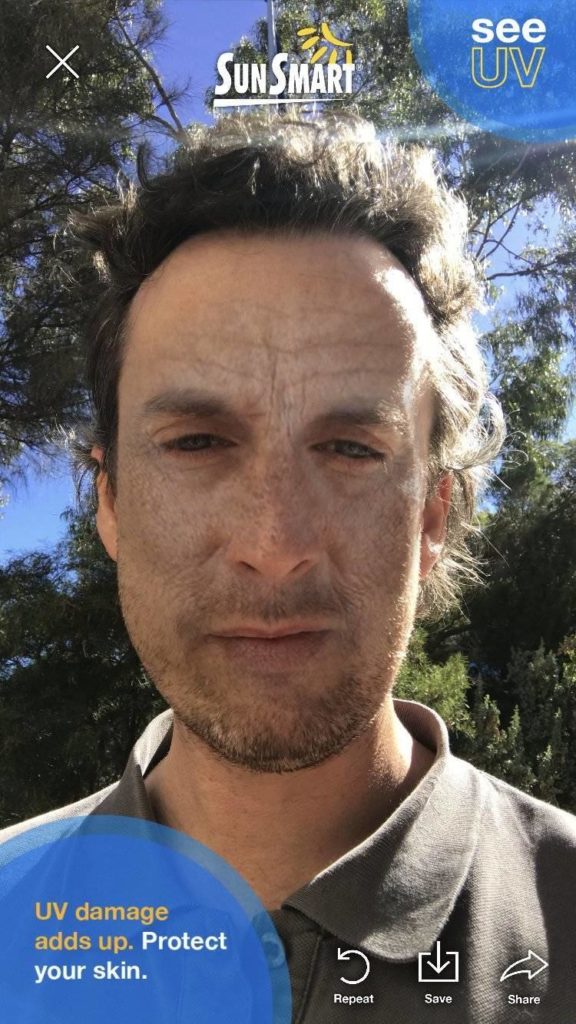
In addition to these apps I recommend a quick look at the Sunsmart website. There is lots of good information on there. Sun exposure is something a lot of us probably don’t think about, but with high rates of both skin cancer and vitamin D deficiency in Australia, we all need to be a little better educated on appropriate levels of sun exposure.
Want to comment on this article, or ask me a question about the health and well-being services available to you as a student? Feel free to comment below, abuse me on Twitter (@Dr_Furber), contact me on Skype (search for ‘eMental Health Project Officer Gareth’), or email me (gareth.furber@flinders.edu.au)

